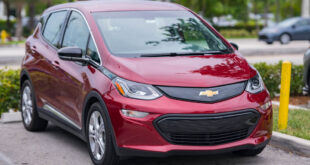Electric Car Sound Regulations: Importance and Impact As electric vehicles (EVs) become increasingly popular, new challenges arise to ensure they integrate seamlessly into our roads. One significant issue is the implementation of electric car sound regulations. These laws aim to improve road safety and address the quiet nature of EVs, which, while beneficial for noise pollution, can pose risks to pedestrians, cyclists, and other road users.
This article explores the key aspects of electric car sound regulations, their importance, global implementation, and their broader impact on society and technology.
What Are Electric Car Sound Regulations?
Electric car sound regulations are laws requiring EVs to emit artificial sounds, particularly at low speeds. Unlike traditional internal combustion engine (ICE) vehicles, EVs produce minimal noise, which can be dangerous for pedestrians and vulnerable road users who rely on auditory cues.
Why Are These Regulations Necessary?
- Enhanced Pedestrian Safety: People with visual impairments or hearing difficulties often depend on the sound of vehicles to navigate safely.
- Reducing Accidents: Quiet vehicles increase the risk of accidents, especially in urban areas with high foot traffic.
- Standardization Across Manufacturers: These regulations ensure that all EVs comply with consistent noise levels, avoiding confusion and potential hazards.
Global Adoption of Electric Car Sound Regulations
United States
The National Highway Traffic Safety Administration (NHTSA) introduced the Quiet Vehicle Rule in 2019. This law mandates that EVs and hybrid vehicles emit sounds when traveling below 18.6 mph (30 km/h).
European Union
The EU implemented the Acoustic Vehicle Alerting System (AVAS) regulation in 2019. This requires all new electric and hybrid vehicles to have AVAS that emits a sound when the vehicle is moving at speeds below 12 mph (20 km/h).
Japan
Japan’s regulations encourage the use of artificial sound devices in EVs to protect pedestrians.
How Electric Car Sound Systems Work
EV sound systems generate artificial sounds through speakers placed in or around the vehicle. These sounds can mimic traditional engine noises or incorporate futuristic, distinctive tones that alert others to the vehicle’s presence.
Pros and Cons of Electric Car Sound Regulations
Pros
- Improved Safety: Reduces the risk of accidents involving pedestrians and cyclists.
- Technological Innovation: Promotes the development of advanced sound systems.
- Inclusivity: Assists visually impaired individuals in navigating safely.
Cons
- Increased Noise Pollution: The artificial sounds could contribute to urban noise.
- Additional Costs: Manufacturers may pass on the cost of installing these systems to consumers.
- Standardization Challenges: Ensuring consistency across different regions can be complex.
10 Tips for Adapting to Electric Car Sound Regulations
- Stay informed about regulations in your region.
- Ensure your EV has a compliant sound system.
- Choose an EV model with adjustable sound settings.
- Be mindful of pedestrian-heavy areas.
- Educate family members about the importance of these sounds.
- Test the vehicle’s sound system during purchase.
- Advocate for inclusive infrastructure, such as crosswalks with auditory signals.
- Support community awareness programs.
- Opt for regular maintenance to ensure the sound system functions correctly.
- Stay updated on advancements in EV sound technology.
FAQs about Electric Car Sound Regulations
- What is the purpose of electric car sound regulations?
To enhance safety by ensuring EVs produce audible sounds for pedestrians and cyclists. - Are all EVs required to comply with these regulations?
Yes, in regions where such laws are implemented, compliance is mandatory. - Can I customize the sound of my EV?
Some manufacturers allow customization within regulatory limits. - Do hybrid vehicles also need sound systems?
Yes, as they operate silently in electric mode. - What happens if my EV’s sound system malfunctions?
You should have it repaired immediately to comply with safety regulations. - Are there penalties for non-compliance?
Yes, fines and other penalties may apply depending on local laws. - Will these regulations affect EV prices?
The cost of sound systems may slightly increase vehicle prices. - How loud do EV sound systems need to be?
The sound level typically ranges between 56-75 decibels. - Can I turn off the sound system?
Regulations often require the sound system to operate automatically at low speeds. - Are there exceptions to these rules?
Exemptions may exist for specific vehicle types or in certain jurisdictions.
Conclusion
Electric car sound regulations are a necessary step in adapting our roadways to the growing presence of EVs. While they present challenges, such as added costs and noise considerations, their benefits in enhancing safety far outweigh these concerns.
As EV adoption grows, these regulations will continue evolving to balance safety, innovation, and environmental needs. Staying informed and proactive will ensure we maximize the benefits of this transformative technology.
 oto car insurance used car repair
oto car insurance used car repair
